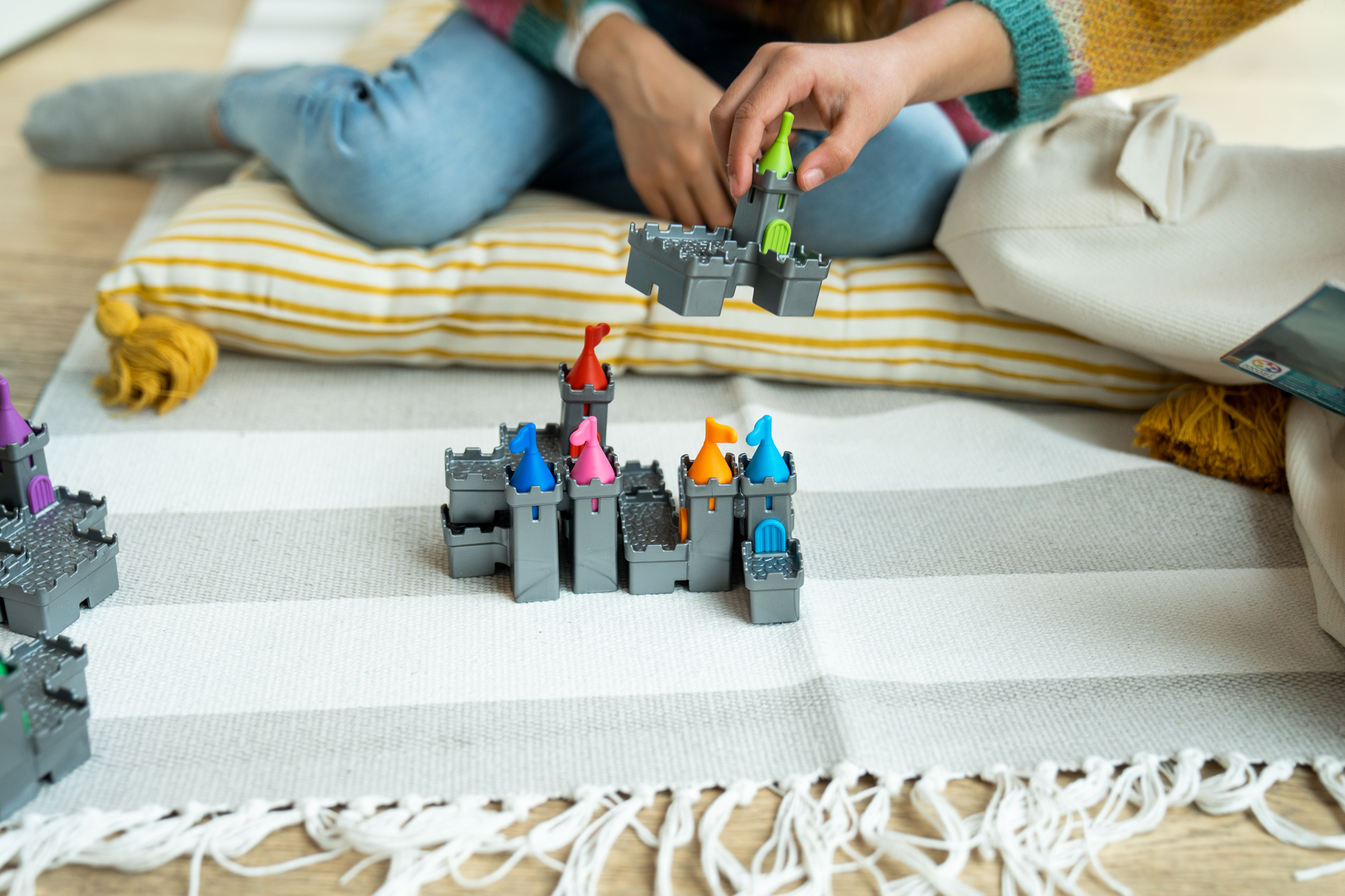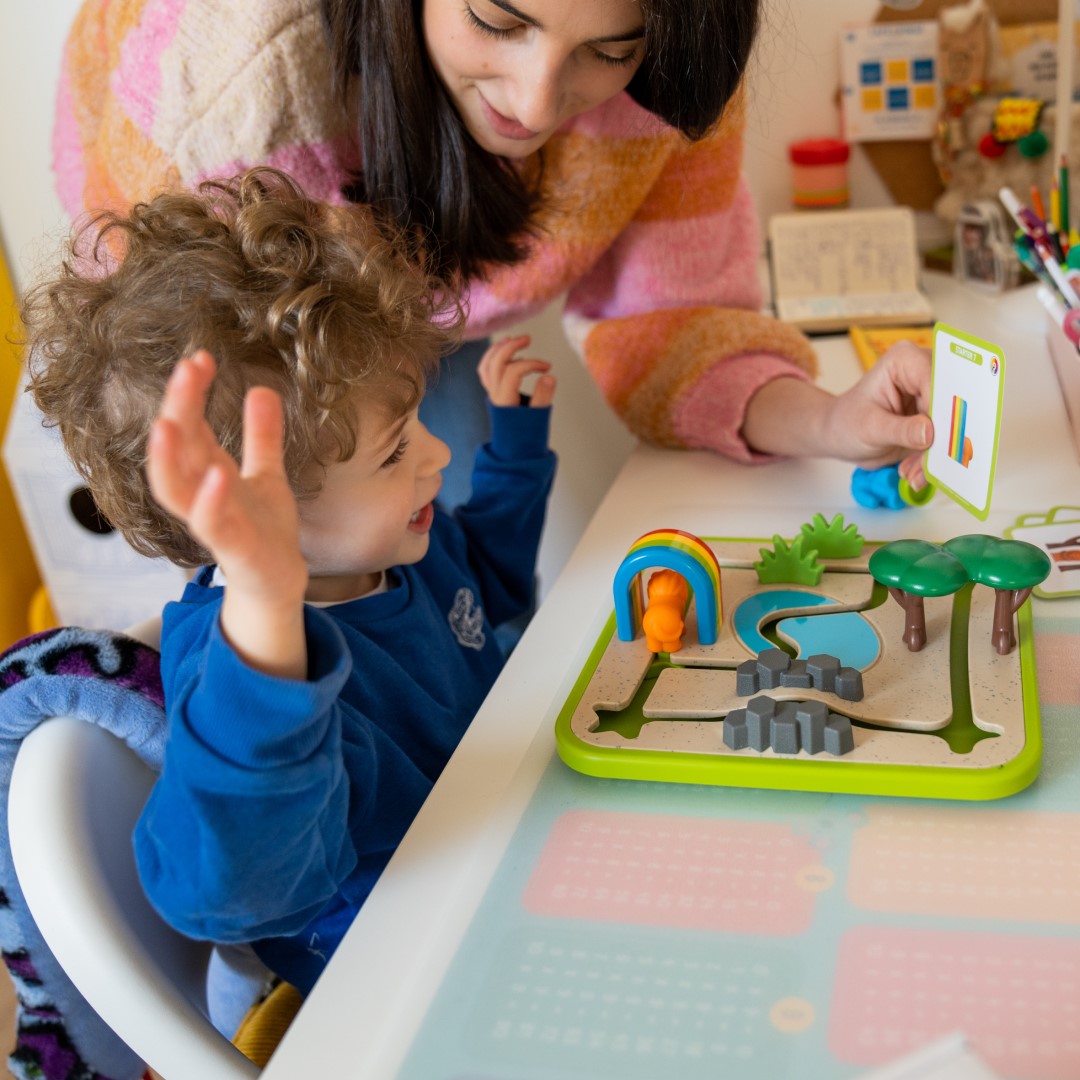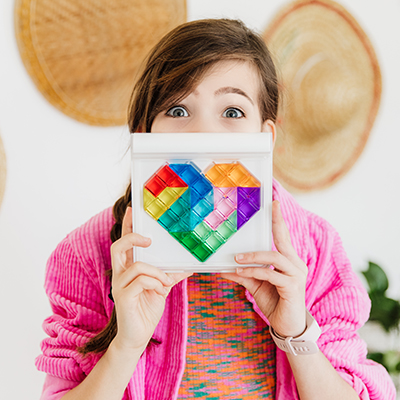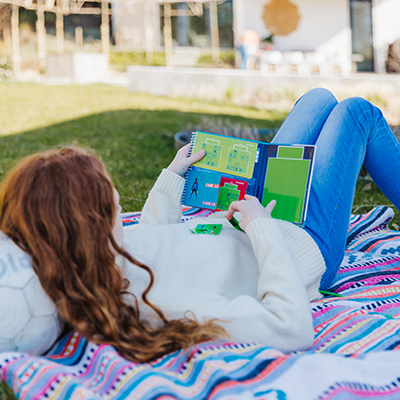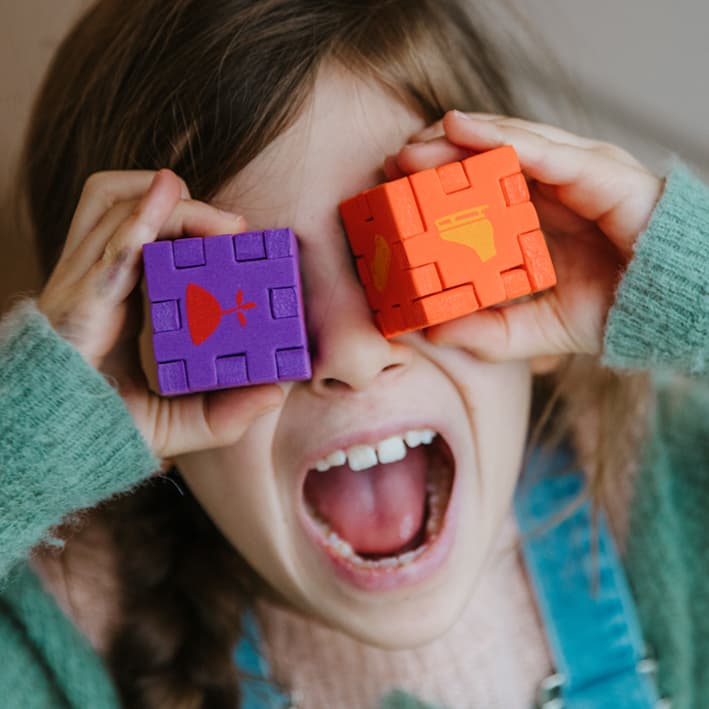The Maths behind IQ Mini

Did you know that there is a lot of maths involved when creating a SmartGame? You can even use fields in maths like geometry and logic to solve the IQ Mini challenges! Who ever said math can’t be fun?!
What is IQ Mini?
IQ Mini is a small game designed by Smart game designers Alain Brobecker and Rein Lambrichts. It's a packing problem where you have to place 6 3D puzzle pieces on the grid. The grid has 3 movable "blockers", giving IQ Mini 193 different possible grids. It’s a small, simple pocket-size game to introduce people to our more difficult IQ-games.
Where does math come into play when developing IQ Mini?
When developing packing problems games like the IQ Mini, people mostly use combinatorics. Combinatorics is a field within mathematics that is primarily concerned with counting, both as a means and an end in obtaining results, and certain properties of finite structures. It is closely related to many other areas of mathematics and has many applications ranging from logic to statistical physics and from evolutionary biology to computer science. By writing a special computer program to do this, we could calculate and count all possible placements of blockers and pieces in the grid that have a solution. The game is created so that all grid-possibilities have at least one possible solution.
Can you use mathematics when solving IQ Mini challenges?
Yes, you can! Take the following example: in the challenge below generated by the IQ Mini WebApp, you can see 2 areas: the area above the 2 puzzle pieces on the gameboard has a surface of 7 empty cells, the one below the pieces has 8 cells. You still have 3 puzzle pieces left that would fill 4 cells and one piece that would fill up 3 cells. In which area will the piece of 3 cells go?
If you do the math right, you’ll see that this puzzle piece will go on top right: 3+4=7 and 4+4=8. This trick will help you solve not only IQ Mini challenges, but also to solve difficult IQ Six Pro challenges faster than the blink of an eye. It’s all about counting cells!

Fun fact: gymnasts
Repeatedly playing these types of games will make you improve your math skills and spatial insights. Fun fact: did you know that for example most gymnasts are able to solve 2D and 3D packing problems superfast? As gymnasts, they have developed amazing spatial insights and orientation skills. They need to for example envision their landings with spatial orientation during an exercise and align their body posture and body orientation to land optimally. These spatial insights also help them in daily life (when packing for holiday, or when playing games like these!).
Do you use maths to solve some of our SmartGames? Let us know via @smartgamessocial !
More information and sources:
Wikipedia (July 2022). Combinatorics. Wikipedia. https://en.wikipedia.org/wiki/Combinatorics
Heinen, Thomas & Walter, Nadja & Hennig, Linda & Jeraj, Damian (2018). Spatial perception of whole-body orientation depends on gymnasts’ expertise. Science of Gymnastics Journal. 10.





